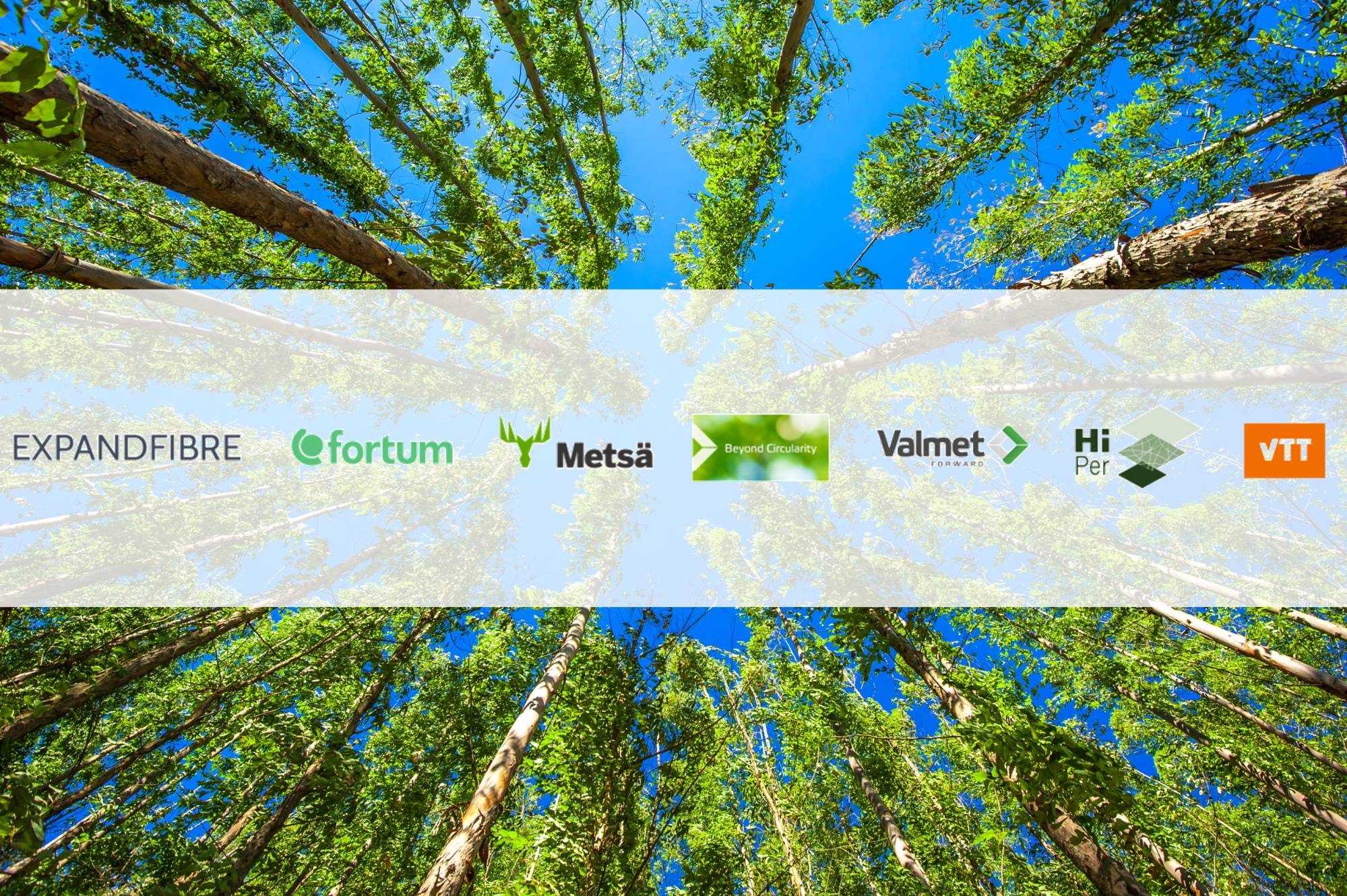
Biocomposites event explored the future pathways of cellulose-based composites for sustainable innovation
Event NewsExpandFibre team was thrilled to organise a joint event day exploring the future of cellulose-based biocomposites together with Valmet’s Beyond Circularity R&D program and ecosystem, and the HiPer project on Thursday April 18th, 2024. The event day consisted of a webinar event in the morning followed by an interactive workshop session in the afternoon hosted by the HiPer team.
The event day titled “Exploring future frontiers in cellulose-based composites for sustainable innovation” was organized at the Innovation Home Kamppi in the centre of Helsinki. The day started with a 2-hour hybrid webinar attended by approximately 30 onsite participants and over 40 virtual attendees. ExpandFibre Program Managers Katariina Kemppainen from Metsä Spring and Gerardo Gómez Millán from Fortum Bio2X kicked off the webinar together with Beyond Circularity’s Ecosystem Director Virpi Puhakka from Valmet, setting the foundations for the presentations of the day.
In the webinar’s first session the work carried out during the two-year Business Finland funded Co-Innovation project HiPer – High Performance Cellulose-based Composites – was highlighted by Kirsi Immonen, Senior Scientist at VTT, and Kristian Salminen, Lead bio-based products at VTT. In their presentation Kirsi and Kristian explained how the manufacturing of thermoplastic composites had been successfully demonstrated on a pilot paper machine, and how foam forming technology had enabled the HiPer team to use long cellulosic fibres leading to strong and mouldable structures. The presentation was closed by exhibiting biocomposite products demonstrated at both VTT and in industrial processes at Isku and Volar Plastic.
Prof. Koon-Yang Lee from Imperial College London presented the extensive work that his research group carries out engineering new materials for various applications involving nanocelluloses, bio-based composites and various waste biomass fractions.
Lasse Kinnari, Technology Manager at NMC Cellfoam Oy, closed the first webinar session with an insightful presentation with specifically industrial point of view. Lasse showcased how NMC Cellfoam provides up to 10 000 different items for up to 1 500 different customers globally using hundreds of different raw materials annually. Lasse also explained how NMC Cellfoam’s wide customer base sees the changing markets as well as how their developing requirements for more sustainable end products are impacting his work. Lasse also emphasized how foam forming could play an important role in enabling novel biocomposites as a solution also for the plastic industry.
The morning webinar’s second session focused on the recent biocomposite themed activities carried out within the ExpandFibre Ecosystem by presenting the ongoing FurBio project, the recently ended NUMOBIO project, as well as highlighting the work Fortum Recycling & Waste are doing with recycled plastic materials for innovative end uses. Associate Prof. Juha Heiskanen from the University of Oulu presented the latest greetings from the FurBio project (Furfural-derived Resins and Biocomposites). Juha explained how the project is targeting to replace fossil-derived resins, commonly used in composite applications, with bio-based furfural-derived resins, and demonstrate their use in biocomposites.
Tuukka Verho, Research scientist at VTT, presented the work carried out during the Business Finland funded research project NUMOBIO, that ran from August 2021 until December 2023. The project focused on the virtual design and testing of biocomposites leading to faster development cycles and improved properties of biocomposite materials. Tuukka explained how the virtual design of structures and components is a routine procure in multiple industries, whereas the virtual design of materials is only an emerging field of expertise. Tuukka also highlighted how VTT and their research partner in the NUMOBIO project, Tampere University, are looking forward to collaborating with the industry to use advanced modelling and characterization to accelerate the development of biocomposites.
The final presentation of the morning webinar was given by Kari Aaltonen, Plastics recycling specialist at Fortum Recycling & Waste. In his presentation Kari presented the Fortum Circo® post-consumer recycled (PCR) plastics, which can also contain cellulosic fibres. Kari explained how the Circo® material is a sustainable alternative to virgin plastics, while also showcasing recent product examples manufactured from the Circo® recycled plastic, such as the KAOS highchair among other interesting materials.
The April 18th event day was closed with an interactive 3-hour workshop, that was expertly facilitated by Alina Ruonala-Lindgren, Co-creation manager at VTT and Kristian Salminen from the HiPer project team. The facilitators presented the workshop participants with the target of the session – ideating on possible end uses for biocomposites to potentially continue the work of the HiPer project. Workshop participants were asked to note down identified business opportunities and ideas for future uses of biocomposites as well as document the challenges, risks and uncertainties related to these potential novel use cases.
The main themes of the workshop’s group works included reflections on the complex themes of plastic replacement and increased usage of recycled materials in biocomposites. The building and construction sectors, as well as the automotive industry were the key industry areas highlighted in the workshop’s use cases. Other key findings of the workshop included the identified general need for funding, both national and EU funding, to successfully demonstrate biocomposites for various novel end uses. One of the key observations of the afternoon’s workshop session was how important it is to demonstrate that bio-based solutions do not translate to inferior quality, and how the participation of the entire value chain is required to successfully demonstrate this.
More information: